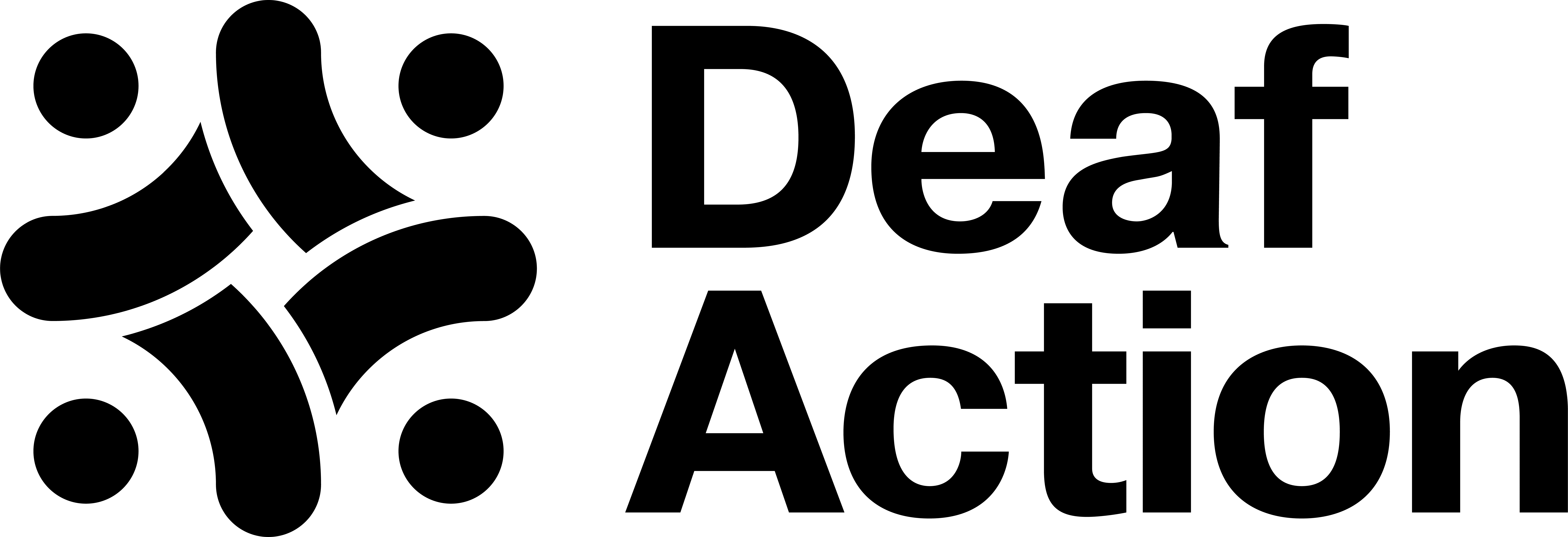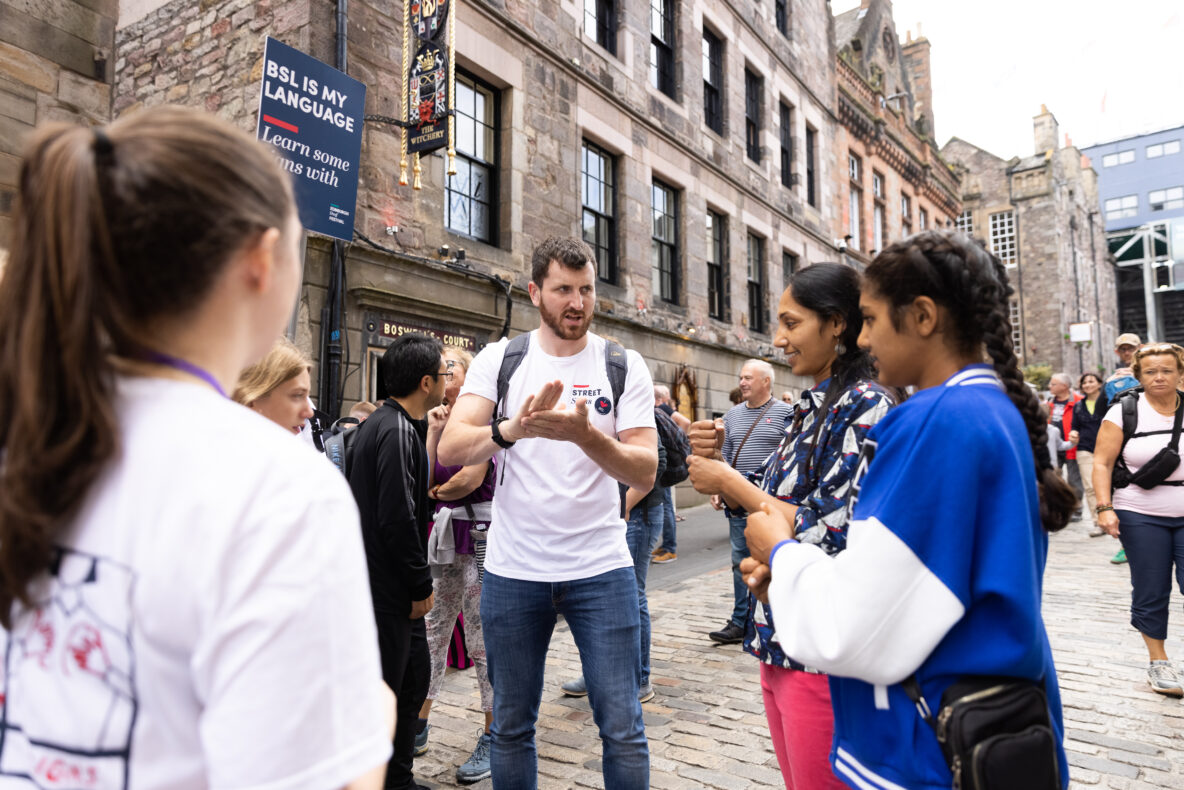Sign Language Week 2024 – What is British Sign Language?
It’s Sign Language Week here in the UK, and so to celebrate, we’ll be sharing content throughout the week to raise awareness about British Sign Language (BSL), and sign languages in general. To kick us off, we thought we’d give you an overview about what BSL is!
What is BSL?
British Sign Language (BSL) is the language most used by the British Deaf Community. It is a language in its own right, with its own grammar, sentence structure and vocabulary. It is a visual language and makes use of not only the hands, but also, lip patterns, facial expressions, body language, and space around the signer to convey meaning.
It’s important to remember that BSL is not just English in signed form. BSL is a complete, natural language, that is independent of English or any other spoken language. It is a language in its own right!
It doesn’t matter if you are young or old, deaf or hearing, BSL is there for everyone to learn and enjoy! It can give you access to a whole new world – the deaf world! As well as an understanding and appreciation of the deaf community and its culture.
What BSL is not
There’s a lot of confusion or wrong information about BSL, so we thought we’d clarify a few things and tell you what BSL is not!
BSL is not English on the hands. BSL is a language in its own right, and does not rely on English or any other spoken language.
BSL is not Makaton. Makaton is a communication system that uses a combination of speech, signs, and symbols to help people with communication difficulties. In Makaton, signs are used, with speech, in spoken word order, and is based on the same grammatical structure as spoken English.
BSL is not universal. We keep saying it, but BSL is a language in it’s own right, and like any language, it develops naturally. And just like spoken languages, signed languages across the world have developed naturally in their own communities.
Did you know? Sign language is not universal
Did you know there are over 300 signed languages used across the world and many countries have their own national sign language? That’s because sign languages are not dependent on spoken languages. That means that even countries that share the same spoken language may have different sign languages.
For example, English is spoken in both the UK and USA. However, British Sign Language and American Sign Language are very different.
In fact, American Sign Language is closer to French Sign Language than BSL due to historical factors. ASL traces its roots back to LSF, which was brought to the United States by Laurent Clerc, a French educator, and Thomas Gallaudet, an American minister, in the early 19th century.
This influence led to the adoption of many signs from LSF into ASL, forming a linguistic bridge between the two. Meanwhile, British Sign Language developed independently, drawing from different linguistic sources and cultural influences, resulting in distinct grammar and vocabulary compared to both ASL and LSF.
Therefore, despite sharing a spoken language, the deaf communities in the UK and USA communicate using different sign languages, highlighting the rich diversity and complexity of signed languages worldwide.
Did you know? Sign language variation
Just like how people in different parts of a country might speak English a bit differently, sign language also has regional variations. British Sign Language is used across Britain, but the signs can be a bit different depending on where you are. This happens because of things like local history, culture, and the preferences of the deaf community there.
Regional differences in BSL signs can be influenced by factors like where people live, whether they’re in a city or the countryside, and even what deaf schools are nearby. Just as English spoken in London may differ slightly from English spoken in Manchester or Glasgow, signs used in BSL can vary regionally as well.
In the video above, you can see how Charlotte and Micthell use different signs for the same concepts, using the examples of PURPLE, TEN, and BOYFRIEND.
Did you know? Language evolution
Just as with spoken languages and other sign languages, BSL evolves naturally too. English is constantly changing and evolving. You can see that when new words come into use, and technology can often have an influence on this. Think of how technology has influenced the words we use today in English – for example LOL or selfie. Each year there are new words entered into the Oxford English Dictionary, while others fall out of use.
BSL is no different. It has to adapt and continually evolve to meet the changing needs of signers and society. In the video above, you can see an example of this in the evolution of the sign for PHONE.
As you can see here, as society and technology evolve, so too does BSL.
Why learn BSL?
After getting this far and you’re still not sure, here’s some extra reasons to get started on your BSL journey…
It’s good for the brain: Learning sign language can make your brain work better. Studies have found that people who know more than one language, including sign language, are better at thinking quickly and making decisions.
Cultural appreciation and awareness: Understanding sign language offers insights into deaf culture and linguistic diversity. For example, learning about the history and traditions of sign language helps individuals appreciate the richness of deaf culture.
Discover the deaf world: Learning sign language enriches personal lives and fosters social connections. By learning sign language, you have access to a whole new culture and community, and the opportunity meet new people and form meaningful friendships and connections.
Up your communication game: Learning sign language isn’t just beneficial for society overall, it’s also great for improving your own communication skills. Think about situations where it’s really loud, like in a crowded bar or at a festival, where talking can be difficult. Or maybe you’re far away from someone in a big room but still need to talk to them. Knowing sign language means you can communicate clearly without having to depend only on speaking.
Remember, It doesn’t matter if you are young or old, deaf or hearing, BSL is there for everyone to learn and enjoy!
Start Your BSL Journey Today
We offer a range of courses, from beginner to more advanced, as well as in-person and online. So no matter where you are, you can discover the world of BSL with us here at Deaf Action! Find out more about our British Sign Language courses.

